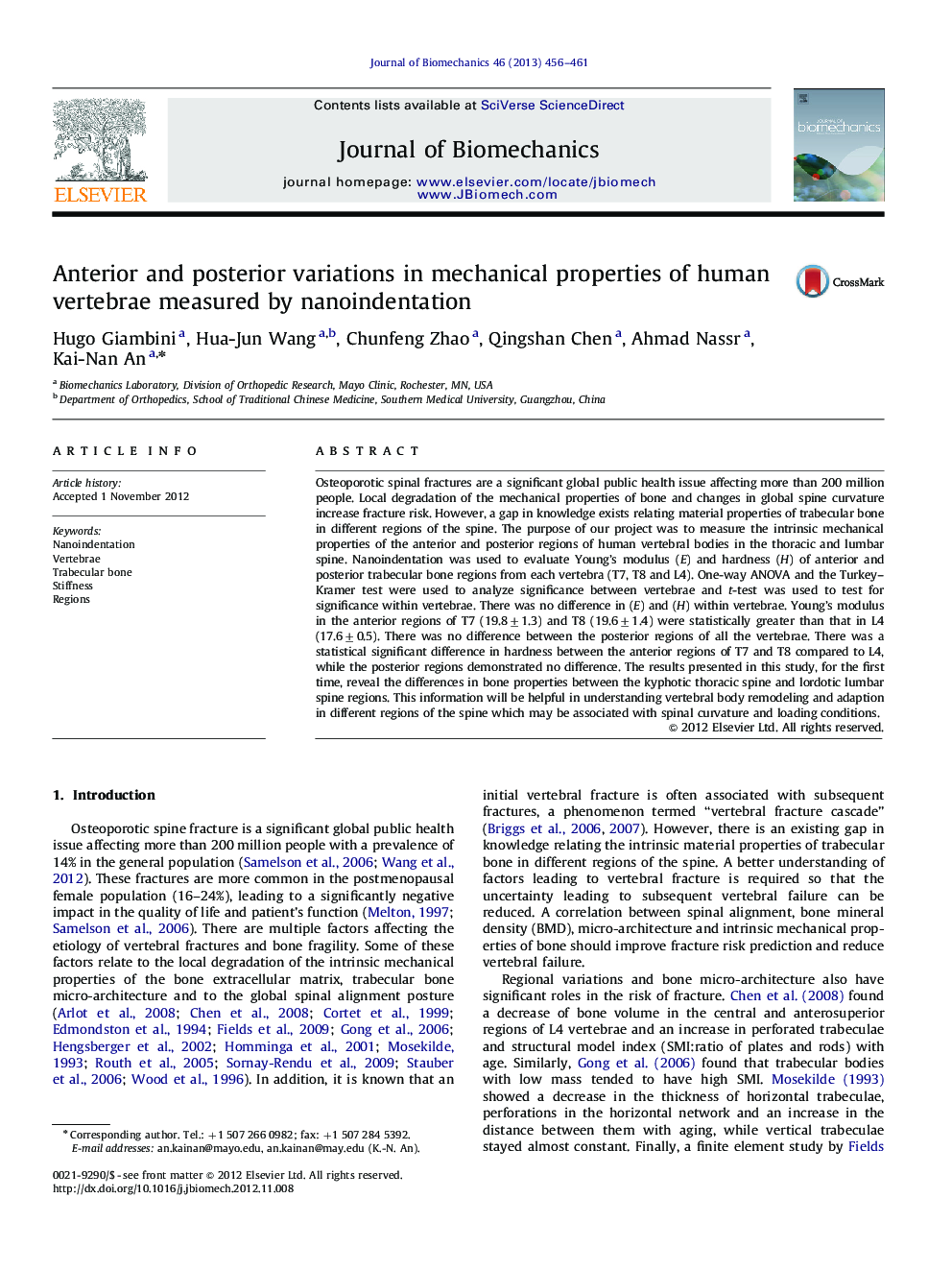| Article ID | Journal | Published Year | Pages | File Type |
|---|---|---|---|---|
| 10431954 | Journal of Biomechanics | 2013 | 6 Pages |
Abstract
Osteoporotic spinal fractures are a significant global public health issue affecting more than 200 million people. Local degradation of the mechanical properties of bone and changes in global spine curvature increase fracture risk. However, a gap in knowledge exists relating material properties of trabecular bone in different regions of the spine. The purpose of our project was to measure the intrinsic mechanical properties of the anterior and posterior regions of human vertebral bodies in the thoracic and lumbar spine. Nanoindentation was used to evaluate Young's modulus (E) and hardness (H) of anterior and posterior trabecular bone regions from each vertebra (T7, T8 and L4). One-way ANOVA and the Turkey-Kramer test were used to analyze significance between vertebrae and t-test was used to test for significance within vertebrae. There was no difference in (E) and (H) within vertebrae. Young's modulus in the anterior regions of T7 (19.8±1.3) and T8 (19.6±1.4) were statistically greater than that in L4 (17.6±0.5). There was no difference between the posterior regions of all the vertebrae. There was a statistical significant difference in hardness between the anterior regions of T7 and T8 compared to L4, while the posterior regions demonstrated no difference. The results presented in this study, for the first time, reveal the differences in bone properties between the kyphotic thoracic spine and lordotic lumbar spine regions. This information will be helpful in understanding vertebral body remodeling and adaption in different regions of the spine which may be associated with spinal curvature and loading conditions.
Related Topics
Physical Sciences and Engineering
Engineering
Biomedical Engineering
Authors
Hugo Giambini, Hua-Jun Wang, Chunfeng Zhao, Qingshan Chen, Ahmad Nassr, Kai-Nan An,
